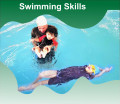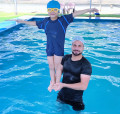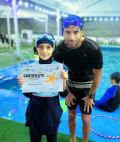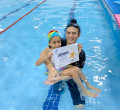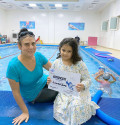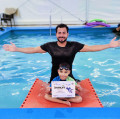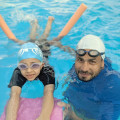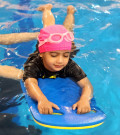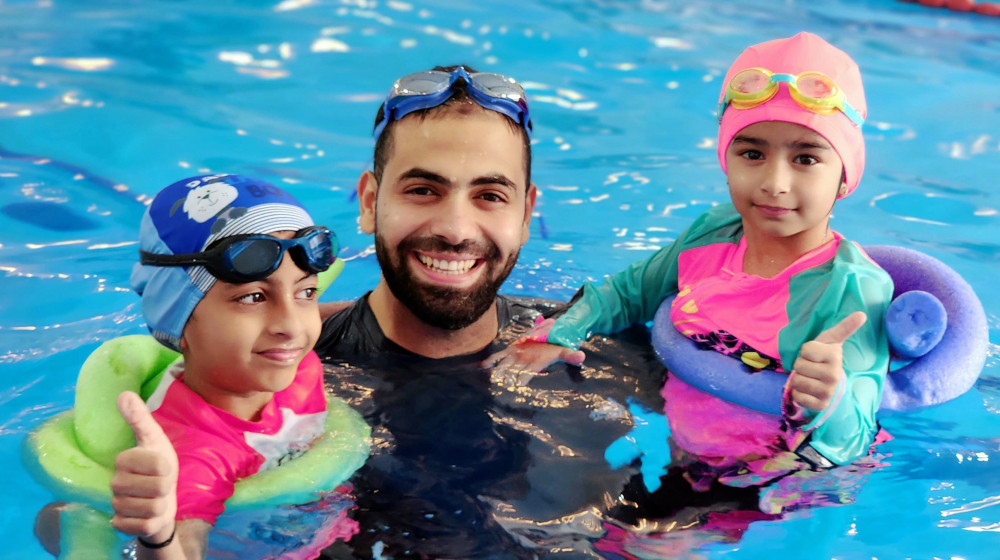
Swimming promotes strength, endurance, and flexibility in children
2024-03-24 - swimmingSwimming is not only a fun activity but also an essential
life skill, especially for children. In this article, we explore the
significance of swimming for kids and how to foster a happy environment
conducive to their learning and enjoyment.
Introduction to Swimming for Kids
Importance of Swimming for Children's Development
Swimming offers numerous benefits beyond just being a
recreational activity. It plays a crucial role in children's physical, mental,
and emotional development. From improving cardiovascular health to enhancing
motor skills, swimming provides a comprehensive workout while being gentle on
the joints.
Creating a Happy Environment for Swimming Lessons
To ensure children reap the full benefits of swimming, it's
vital to establish a positive and encouraging atmosphere during lessons. A
happy environment can make all the difference in how children perceive swimming
and their willingness to learn and improve.
Physical Health Advantages
Swimming promotes strength, endurance, and flexibility in
children. It's a full-body workout that engages various muscle groups and helps
maintain a healthy weight. Additionally, swimming can improve coordination and
balance, which are essential skills for overall physical development.
Mental and Emotional Benefits
Apart from physical health, swimming has significant mental
and emotional benefits for children. It can reduce stress and anxiety, boost
mood, and improve sleep quality. Swimming also fosters a sense of independence
and confidence as children learn to navigate the water safely.
Warm and Welcoming Facilities
The environment where swimming lessons take place should be
inviting and comfortable for children. Warm water temperatures, colorful décor,
and clean facilities can make children feel at ease and excited about their
lessons.
Qualified and Friendly Instructors
The demeanor of swimming instructors plays a crucial role in
shaping children's attitudes toward swimming. Experienced instructors who are
patient, encouraging, and able to connect with children can make a significant
difference in how children perceive their swimming lessons.
Fun and Engaging Activities
Incorporating games, toys, and other fun activities into
swimming lessons can make them more enjoyable for children. Activities that
challenge children while keeping them entertained help maintain their interest
and motivation to learn.
Overcoming Fear and Anxiety
Gentle Introduction to Water
For children who are apprehensive about swimming, it's
essential to introduce them to the water gradually. Starting with shallow water
and providing plenty of support and reassurance can help ease their fears and
build confidence.
Building Confidence Gradually
Encouraging children to set achievable goals and celebrating
their progress can boost their confidence in the water. Gradually increasing
the difficulty of swimming tasks as children become more comfortable can help
them overcome challenges and develop a sense of accomplishment.
Lifeguards on Duty
Safety should always be a top priority in swimming
environments. Having lifeguards on duty during lessons provides an extra layer
of protection and ensures that children are supervised at all times.
Proper Supervision During Lessons
In addition to lifeguards, instructors should provide close
supervision and guidance to children during swimming lessons. Monitoring
children's progress, correcting technique, and addressing safety concerns
promptly are essential aspects of effective supervision.
Teaching Essential Water Safety Skills
Alongside swimming skills, children should be taught
essential water safety skills, such as floating, treading water, and recognizing
hazards. Equipping children with these skills can help prevent accidents and
instill confidence in their ability to stay safe in and around water.
Group Activities and Games
Swimming lessons provide an excellent opportunity for
children to interact with their peers in a fun and supportive environment.
Group activities and games not only make lessons more enjoyable but also foster
teamwork and cooperation among children.
Team Building Exercises
Engaging children in team building exercises can help
strengthen bonds and create a sense of camaraderie among swimmers. Working
together to achieve common goals and supporting one another through challenges
can enhance the overall swimming experience.
Recognizing Progress and Effort
Acknowledging children's achievements, no matter how small,
can boost their confidence and motivation to continue improving. Whether it's
mastering a new stroke or overcoming a fear, celebrating milestones reinforces
children's sense of accomplishment and encourages them to set new goals.
Creating a Positive Atmosphere
Maintaining a positive and supportive atmosphere during
swimming lessons is essential for fostering children's love for the water.
Encouraging a growth mindset, where mistakes are viewed as opportunities for
learning and growth, can help children overcome setbacks and stay motivated.
Conclusion
Swimming offers numerous benefits for children's physical,
mental, and emotional well-being. By creating a happy and supportive
environment for swimming lessons, we can help children develop essential
skills, overcome fears, and cultivate a lifelong love for swimming.







.jpg)




































































